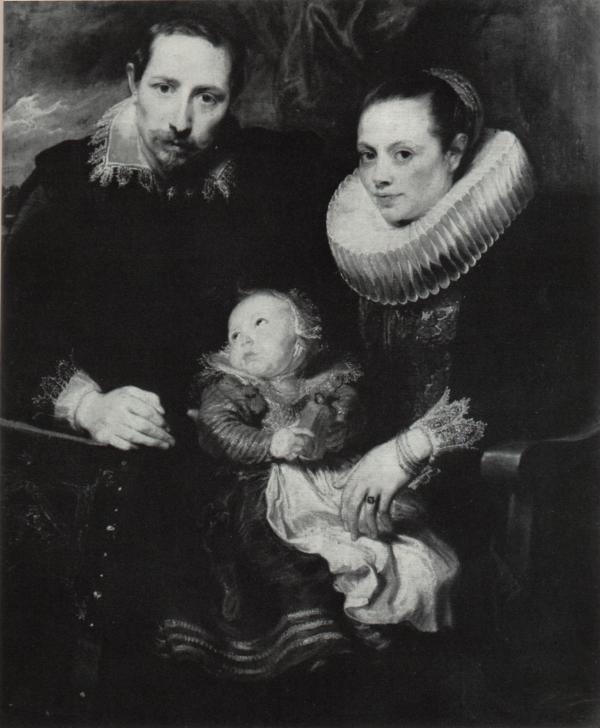

"Man and His World International Fine Arts Exhibition Expo 67 Montréal Canada" by Pierre Dupuy © the Canadian Corporation for the 1967 World Exhibition and the National Gallery of Canada
| Anthony van Dyck. 1599-1641
Family Group. c.1621 Van Dyck, who after Rubens was the foremost Flemish painter of the seventeenth century, was born in Antwerp. At the age of ten he became the pupil of Hendrik van Balen, but his great teacher was Rubens, whom he assisted after 1617. He was master in the painters' guild of Antwerp before he was twenty. His long association with England began on a short visit there in 1620-1. Then, on Rubens' advice, he worked in Italy until 1627, absorbing the styles of the great masters of painting. After his return he may have again visited England briefly. It was, however, in 1632, on the invitation of Charles I, that he settled in London, became court painter, and was knighted by the King. His immense success as a portrait painter in the grand manner enabled him to live in luxurious style. Shortly before his death in London he made a journey to Antwerp, Brussels, and Paris. The Family Group in the Hermitage was in earlier days thought to represent the family of Frans Synders or that Jan Wildens, both painters and contemporaries of Van Dyck in Antwerp. From the early period of the artist, before his departure for Italy in 1621, it shows his early mastery of Rubens' lifelike and expressive style in portrait painting and is an astonishingly mature achievement for a young painter. The feeling of tender affection which links the family together is subtly conveyed. The contrast of the sensitive face of the man and the calm expressions of the woman and child give the picture an immediacy which tended to be lost in the aristocratic mask-like portraits of his English period. Also evident is his brilliant brush-work and handling of colour, which was to remain with him for the rest of his life. The picture, which was bought in Antwerp in 1762 by a French private collector, was acquired by the Hermitage in 1774 during the great period of the development of its collections under Catherine the Great. |